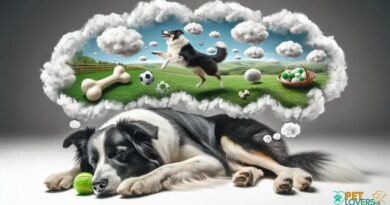O que é instinctual playfulness
What is Instinctual Playfulness?
Instinctual playfulness refers to the innate behaviors exhibited by dogs during play. This natural inclination is not just about having fun; it serves various purposes in a dog’s life, including socialization, physical exercise, and mental stimulation. Understanding instinctual playfulness can help dog owners foster a more enriching environment for their pets, allowing them to thrive both physically and emotionally.
The Importance of Play in Dog Development
Play is crucial for a dog’s development, especially during their formative years. Puppies engage in instinctual playfulness to learn important social skills, such as bite inhibition and body language. Through play, they interact with their littermates and other dogs, which helps them understand boundaries and appropriate behavior. This early socialization is vital for preventing behavioral issues later in life.
Types of Instinctual Playfulness
Dogs exhibit various types of instinctual playfulness, including chasing, wrestling, and tugging. Each type serves a different purpose and can be beneficial for a dog’s physical and mental health. For instance, chasing games can enhance a dog’s agility and speed, while wrestling encourages strength and coordination. Understanding these different play styles can help owners engage their dogs in more meaningful activities.
How Instinctual Playfulness Benefits Dogs
Engaging in instinctual playfulness provides numerous benefits for dogs. It helps them release pent-up energy, reducing the likelihood of destructive behaviors at home. Play also stimulates a dog’s mind, keeping them sharp and alert. Furthermore, social play with other dogs can enhance their confidence and reduce anxiety, leading to a happier and more well-adjusted pet.
Recognizing Signs of Instinctual Playfulness
Recognizing when your dog is in a playful mood is essential for fostering their instinctual playfulness. Signs include a wagging tail, playful barks, and a relaxed body posture. Dogs may also exhibit a “play bow,” where they lower their front legs while keeping their rear end up, signaling their desire to engage in play. Being attuned to these signals allows owners to initiate playtime effectively.
Encouraging Instinctual Playfulness at Home
To encourage instinctual playfulness, dog owners can create an engaging environment filled with toys and interactive games. Puzzle toys, fetch games, and agility courses can stimulate a dog’s natural instincts and keep them entertained. Additionally, scheduling regular playdates with other dogs can enhance their social skills and provide opportunities for instinctual playfulness in a safe setting.
Instinctual Playfulness and Training
Incorporating instinctual playfulness into training sessions can make learning more enjoyable for dogs. Using play as a reward can motivate dogs to engage in training exercises, reinforcing positive behaviors. For example, incorporating fetch or tug-of-war into training can help dogs associate learning with fun, making them more eager to participate in future sessions.
The Role of Breed in Instinctual Playfulness
Different dog breeds exhibit varying levels of instinctual playfulness, influenced by their genetic background and historical roles. For instance, herding breeds may display more intense chasing behaviors, while toy breeds might prefer gentle play. Understanding your dog’s breed characteristics can help tailor play activities that align with their natural instincts, ensuring a more fulfilling play experience.
Common Misconceptions About Instinctual Playfulness
Many dog owners may misunderstand instinctual playfulness, thinking it is merely a phase that puppies outgrow. However, play is a lifelong necessity for dogs, regardless of age. Older dogs may not play as vigorously as puppies, but they still benefit from gentle play and mental stimulation. Recognizing the importance of play throughout a dog’s life can lead to better care and companionship.




